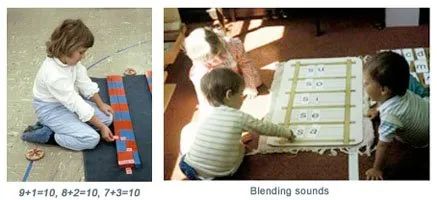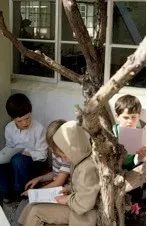Every Child Is a Winner
How Montessori Honors Individual Differences
Montessori considers children’s individual differences, which can make or break how well they learn, to be of prime importance. Are you just like anyone you know? Of course you’re not. If you have more than one child, are they just the same? No, no, a thousand times, no! Everyone is different in many distinct ways.
Yet the educational system widely in practice around the world is based on a factory model that all children need to learn the same things at the same time, in more or less the same way. It is an oddity, at best that so many things are rapidly changing around us, yet education has not begun to catch up.

With all the discussions about needed change in our educational system, many folks have not realized that the answer is already here! Maria Montessori developed a comprehensive system of education for young children that honors each one’s individual differences. It is a fully developed method based on solid principles of child development. As a system, it has grown from one school in Rome to tens of thousands of schools across the globe.

Dr. Elisabeth Caspari tells the story of being invited to speak at an education conference in Missouri in the early 1960s. A whole group of speakers presented their work and theories and then she got up. She showed her slides, telling the group that seeing the children at work was always far more effective than hearing her words.

She explained the basic structure of Montessori early childhood classrooms (for ages 2½-6), with the four great avenues of learning:
- Practical life – including making orange juice, sweeping the floor, watering the plants, folding cloths, and learning to button and zip.
- Sensorial – including training and refinement of the senses, and introduction to the sciences (such as geography) with hands-on materials
- Language – from vocabulary and oral language to learning the sounds and letters, building words, reading, and writing
- Math – including the basics of counting and matching digits to real quantities, all the way through learning the functions of the four basic operations of addition, subtraction, multiplication and division, and even memorizing many math facts.
The superintendent of the local school district was amazed, telling her that all his schools did was “hit or miss.” He had no idea of the structure within Montessori, nor did he have any idea of how far these little ones could go. He did not realize that there was an entire system able to handle and even celebrate individual differences.
He wanted to know more, so he began to drive Montessori and her lovely materials around with a U-Haul truck to introduce this method and message to all the schools in the area. Of particular interest was the fact that here was a method that made it possible to honor and respect the individual differences of children in a manageable way.
 In a Montessori classroom, children quickly learn the basic ground rules: they may take anything off the shelves that they have been introduced to, as long as they use it carefully and put it back when they are finished. Their teachers carefully observe them and introduce new materials as soon as they show they are interested and ready for them. Teachers move the children along as quickly as they are learning.
In a Montessori classroom, children quickly learn the basic ground rules: they may take anything off the shelves that they have been introduced to, as long as they use it carefully and put it back when they are finished. Their teachers carefully observe them and introduce new materials as soon as they show they are interested and ready for them. Teachers move the children along as quickly as they are learning.

The children themselves choose what work they want to do each day, and progress at different rates of speed in different areas of their development. Some children learn to read at the age of three. Others learn at five or six.
No one is pushing them and they learn to love to learn. Weather permitting, classroom learning goes on outside as well as inside. The five-year-old boys above are thrilled with their newfound ability to read!
 Some adore math and learn most of their addition facts before they go to first grade through the tables of ten; others are content to learn to count. Learning about place value and the decimal system is a perennial favorite of those aged four and five.
Some adore math and learn most of their addition facts before they go to first grade through the tables of ten; others are content to learn to count. Learning about place value and the decimal system is a perennial favorite of those aged four and five.

Other children prefer science and learn all the leaf shapes by the time they are four, while some like geometry best of all.
The typical Montessori environment has anywhere from 150 to 200 different lessons children can choose to do, similar to those you see in the pictures. Each one is constructive and has a specific purpose. Children are able to select the activities they are most interested in, when they are interested, and free to accelerate in the areas where they find their greatest competency. No one is artificially held back or pushed ahead faster than they can manage. Honoring individual differences in a structured manner makes every child a winner.

Our Age of Montessori parent and teacher training course will instruct you in how to teach all these materials. You will learn how to create your own lessons, and meet the individual needs and interests of each child in your home or classroom.






















